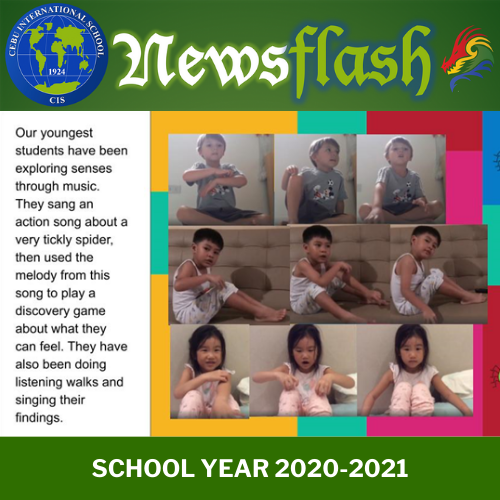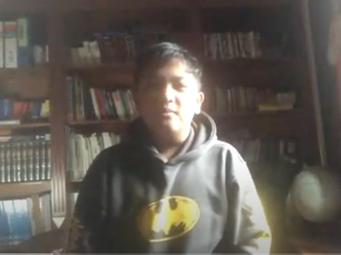
Using Breakout Groups
by Mr. Jon Denton, Asst. MHS Principal & MYP Coordinator
“BREAKOUT GROUP” is a term you may have heard a lot during our period of remote learning, but what are they, how do they work and how do they improve learning?
CIS is a school with a strong commitment to collaborative learning. We learn a lot from each other’s knowledge, experiences, and understandings. Sometimes collaboration reaffirms what we already know, sometimes it extends our understanding, and sometimes it even challenges us to change our perspectives and the way we see the world.
In a face-to-face environment, this is done through group work and collaborative projects, with students sitting around a table together. In our remote learning classes, teachers create chat rooms through Google Meets for the same purpose. These are what we refer to as “BREAKOUT ROOMS.”
These BREAKOUT ROOMS are completely student-led and very popular, as you can see in this reflection to the prompt, “GRADE 8, WHAT WOULD YOU LIKE MORE OF IN YOUR REMOTE LEARNING CLASSES”:
“Pair/breakout group work, because we can learn from each other when we share ideas, and having to pick our own groups/pairs sometimes would be nice.”
To ensure the success of the group we assign different roles for each group member, as set out in these cards:
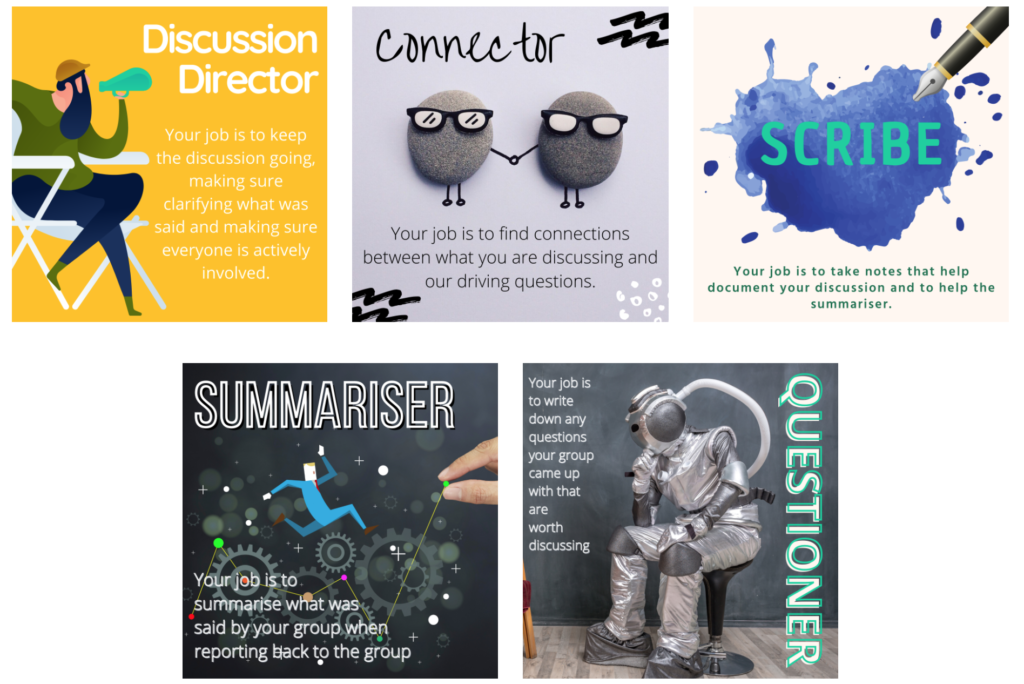 One role, the DISCUSSION DIRECTOR, has the responsibility of ensuring everyone in the group contributes to the discussion. To help with this I provide students with this set of prompts:
One role, the DISCUSSION DIRECTOR, has the responsibility of ensuring everyone in the group contributes to the discussion. To help with this I provide students with this set of prompts:
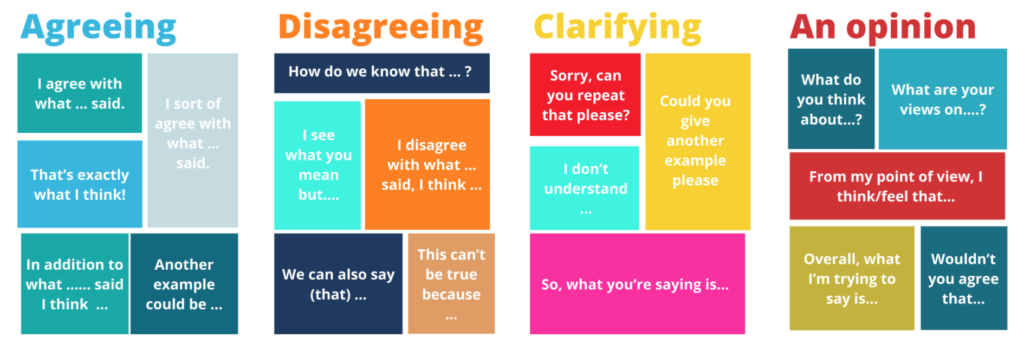 Another role in the BREAKOUT GROUP is the SUMMARIZER. Their job is to summarize the main points of the group to share with the class when meeting back as a larger group. This is a fantastic role to assign a student weaker in English as the rest of the group can work together to prepare this student for when their group reports back.
Another role in the BREAKOUT GROUP is the SUMMARIZER. Their job is to summarize the main points of the group to share with the class when meeting back as a larger group. This is a fantastic role to assign a student weaker in English as the rest of the group can work together to prepare this student for when their group reports back.
So circling back to our three questions: what are they, how do they work, and how do they improve learning? BREAKOUT GROUPS are collaborative learning experiences where students learn from each other to either reaffirm, extend or challenge their own perceptions of the world.
Elementary News
by Mr. Glenn Davies, Elementary School Principal
Dear Elementary Community,
As a PYP school, the IB supports us with the development of our program and the upskilling of our teachers. Additionally, the IB is deeply concerned with the quality of relationships in our learning community. As IB educators we believe that quality of learning happens through:
- A strong, trusting learning community
- High quality instruction and instructional strategies implemented by skilled and competent educators
- Gradually increasing student ownership of learning through student-driven inquiry
- Quality assessment practices
Today I would like to share the PYP perspective on the Learning Community.
The PYP Learning Community
As an IB PYP School, Cebu International is committed to developing and maintaining a community of learners who are committed to the well-being of individuals and groups.
About the Learning Community, the IB PYP says:
- The learning community recognizes that education is a social endeavor benefiting all its members individually and collectively
- An inclusive learning community:
- lives peacefully together by engaging with different ways of knowing and being
- prioritizes people and their relationships
- assumes shared responsibility for learning, health, and well-being
- Everyone in the learning community has agency, see themselves as contributors to its strength and success, and take action to affect change
(PYP Principles to Practice: The Learning Community, 2018)

Let’s explore each of these ideas in a little more detail.
A Shared Commitment
We believe that learning happens best through warm social interactions. Warm interactions benefit individual learners and they also benefit the entire community. As students gain increased levels of self-efficacy (a belief in what can be achieved through goal setting, strategic planning, and perseverance), a sense of community self-efficacy is also created. As self-efficacy increases, Agency, (defined as community voice, community choice, and community ownership) also increases. We are not only part of the CIS community, we are also part of a global IB community that holds a shared belief that we can help to build a caring and more peaceful world.
Living Peacefully Together
We prioritize the values of respect, integrity, and care. Living peacefully does not mean we avoid disagreements or differences of opinion. Instead, living together peacefully recognizes that others, with their different opinions, values, and backgrounds, can also be right. Each of our personal narratives and experiences can be told from many different perspectives, and we welcome conversations and interactions that challenge fixed perspectives and build understanding of identities, cultures, societies, and histories.
Prioritizing People and their Relationships
We believe that all members of our community are valuable and help to form our shared vision, mission, and set of beliefs and values around learning. Central to this belief is the IB Learner profile, where attributes such as caring, principled, and open-minded inquirers help to strengthen our relationships. Each of us approaches conversations and experiences from our own perspective, and as an IB community, we respect individual perspectives, while also demonstrating a commitment to being a collaborative learning community. As an IB community, CIS believes all relationships are dynamic and all relationships support the well-being of the learning community.
During this time of extended period of Remote Learning, we have all learned to communicate differently. Dynamic relationships sometimes find themselves in conflict, however, it is our commitment to developing shared understandings and prioritizing people and relationships that make our CIS community the strong trusting place that it is. The words written in the IB document PYP Principles to Practice: The Learning Community come alive when they are lived out in practice, and I am proud to be part of a community where this happens.
Kindergarten/Grade 1
 The KG1 students are continuing to be confident readers and writers. We are making non-fiction books about the different types of transportation and how they connect us with others.
The KG1 students are continuing to be confident readers and writers. We are making non-fiction books about the different types of transportation and how they connect us with others.
 The KG1s also made models of transportation to use on their map. They added labels, explaining its parts and features.
The KG1s also made models of transportation to use on their map. They added labels, explaining its parts and features.
Music

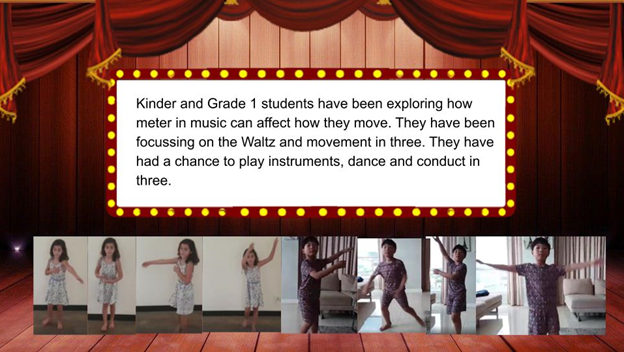
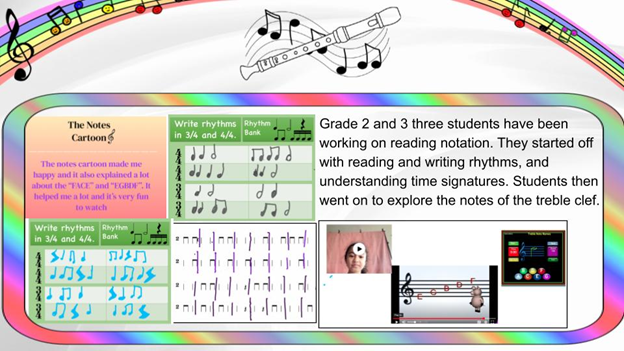
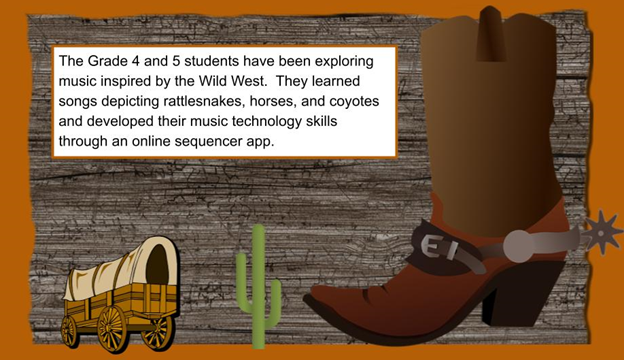
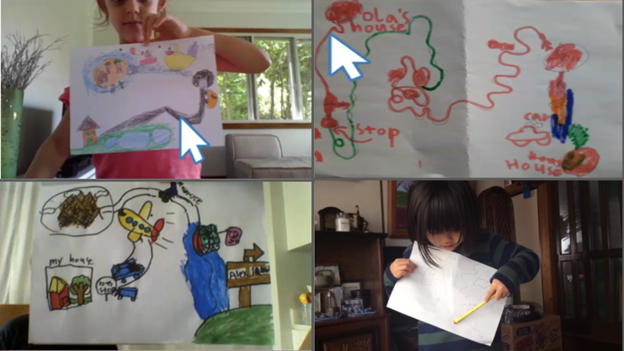 To make connections, the KG1 students made a travel plan. They drew a map and included the type of transportation they will be using to get to their destination.
To make connections, the KG1 students made a travel plan. They drew a map and included the type of transportation they will be using to get to their destination.
 In Math, we have been learning about shapes. To connect to our Unit of Inquiry, the KG1 students made different models of transportation by piecing different shapes together.
In Math, we have been learning about shapes. To connect to our Unit of Inquiry, the KG1 students made different models of transportation by piecing different shapes together.
 Part of learning about transportation is exploring how movement enables people to engage with the world.
Part of learning about transportation is exploring how movement enables people to engage with the world.
We also explored how transportation changed as we looked at pictures of transportation from different times, comparing it to what we have now. The students interviewed their parents and grandparents to ask about what transportation was like before. Here are some of their responses:
- Before we would use bicycles. Now, vehicles are more efficient, we have electric buses in some places in Scotland. – Erin
- Today there are plenty of modes of transportation compared to before. – TK
- Before we only had jeepneys. Now there are electric bikes and scooters to take us around the city. – Ben
- Before we did not have fast trains. Now we have plenty of very fast trains. – Masa
Middle and High School News
by Mr. Dale Wood, Middle and High School Principal
Last week we focused on language in Middle and High School and how our Language Acquisition and Language and Literature teachers are leading their students to further develop their communication skills in English, Mandarin, and Spanish. This week we turn our attention to another language, the language of Mathematics. Why do we say that Math is a language? Just as with other systems of communication (i.e. systems for conveying messages) Math provides a specific set of terminology and a framework, even a grammar and syntax, for understanding the numerical and quantitative aspects of our world.
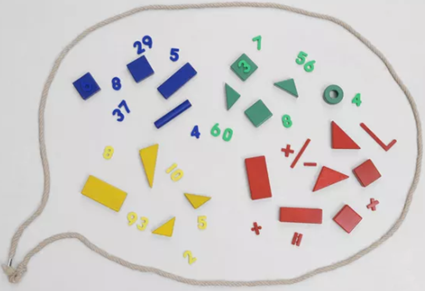
Italian astronomer and physicist Galileo Galilei is attributed with the quote, “Mathematics is the language in which God has written the universe,” which is understood to be a summary of his statement in Opere Il Saggiatore:
[The universe] cannot be read until we have learnt the language and become familiar with the characters in which it is written. It is written in mathematical language, and the letters are triangles, circles and other geometrical figures, without which means it is humanly impossible to comprehend a single word.
In fact, because we use the same symbols and organizational patterns to solve equations throughout the world, we can reasonably assert that math is a universal language, transcending time and culture. Due to the fact that the meaning of a given phrase or formula in Math is consistent regardless of the other language or languages that accompany it, this universal language can be a very useful tool for our students in their learning and communication. This is one reason why a student may excel in Maths if he or she is conversant with its language even if other language barriers may be present.
This week we will be exploring how our students are exploring and communicating using this universal language in their courses to help them grow in their knowledge and understanding.
Grade 9 Math – Core
Grade 9 Core students have been introduced to the world of trigonometry. Learning how to use different ratios to find missing information, solving problems and learning how it is applied in the real world through surveying tools like the theodolite has been the focus this quarter.
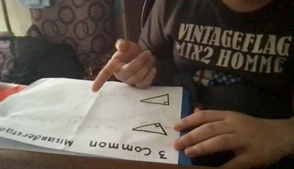
This week in Math, students started the class with a 2-Minute Warm-up Activity. They were tasked to select one of the activities and record their responses on Flipgrid.
You need to select one of the 3 activities set out below, make a 2 minute video and share it with me on Flipgrid.
| Dos and Don’ts | 3 common misunderstandings | Big Picture |
| Outline three dos and three don’ts when solving trigonometry related questions. | Outline what you think might be the three most common mistakes students make when solving trigonometry problems | Our statement of inquiry for this unit is,“Mathematical relationships allow people to calculate what they can’t measure. Exploration allows us to discover the unknown.”
Outline how this relates to what we have been doing in class. |
| “Common misunderstanding is also related to the trigonometric equations. Especially when it comes to solving them and that is when you switch around the different parts of the equation. For example, switching around the opposite and adjacent sides in problems can lead to some different answers.” - Zeke, G9 Core
“Another mistake that could possibly happen is related to the sine cosine tangent. So when you need to find the correct formula to use, sometimes people mix different things up and you use the different ratios instead. So an example of that would be if the problem required using cosine and you use tangent, then you would get a completely different answer. - Natalie, G9 Core | “Our statement of inquiry for this unit is-Mathematical relationships allow people to calculate what they can measure. Exploration allows us to discover the unknown. This relates to what we’ve been doing class because we’ve been learning how to find the approximate measurements for right triangles. To calculate what we can’t measure, we use trigonometric ratios, sine, cosine and tangent to find the approximate. In this unit we have started using calculators to help us find the solution. The right triangle includes hypotenuse, the opposite sign an adjacent angle. To do this, we also need to use our previous knowledge. Like the Pythagoras theorem, and that all angles in a triangle equal up to 180. These are all mathematical relationships.” - Sofia, G9 Core |
Grade 6 Math
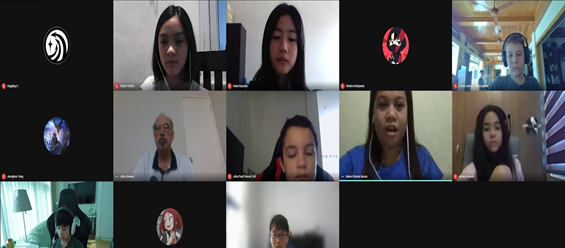
In G6 Math class, we have been exploring the concept of shape and space in the two dimensional world. And to start students explored different units of measurement in the Metric system. In this Breakout activity, students were assigned in groups and they decided on who would take the roles of being a leader (facilitator), recorder (note-taker) or reporter (presenter). We created a Google slide presentation which everyone was able to access and edit in order to share or add their group’s findings. They then used their media literacy and research skills to learn more about measurements and gather information from various sources. They collaborated with their peers and brainstormed regarding what is measured by each of the given instruments and what kind of measuring tools each member of the community helpers use. Finally, the students discussed and presented their findings to the rest of the class.

Here are some of our students’ reflections from the Breakout activity:
| 1.) What do you think this exercise was all about?
“I think that this exercise was learning about different instruments that are used to measure different things in our lives. It was about getting to know how different things around us are measured.” – Saki “I felt like this exercise was to know the understanding and different measurements and how they are used and who uses them.” – Monica “I think the exercise was for the future and in case we need to know it like for our future jobs or certain things we might need to know what measurement to use.” – Chloe “I think this exercise was to teach us how to do the previous Homework and to teach us how to communicate and tell each other our answers.” – Niño “I think this exercise was about to get to know more about measuring and also to know there are many ways to measure.” – Hana |
| 3.) What things did your group do that made it harder?
“We talked about the answers we got and shared them with our group.” – Monica “Our group did not have the best typers so we could have done it faster, but overall it was nice.” – Chloe “It was a bit hard because sometimes we would talk at the same time and it would be hard to hear some people’s opinions.” – Niño “Most of the classmates didn’t complete the homework that day so there were only a few answers to put into the slide which made it a little hard to solve the question.” – Saki |
| 2.) What things did your group do that help solve the problem?
“For searching and getting the answers from the internet, my group searched with a key word in the search so we could get the right answers to the questions asked in the slide.” – Saki “We discussed our answers with each other and shared ideas.” – Monica “Our group helped one another because we all shared our answers with each other and did different jobs.” – Chloe “We talked about the answers we got in the homework and we would put all of our answers together.” – Niño “We shared our ideas so we got more options for the answer not only depending on 1 answer.” – Hana 4.) What could your group do better in the future? “Agree on others’ ideas according to the majority.” – Monica “Our group could have done more research and look into everything more thoroughly.” – Chloe “We could take turns sharing so that we wouldn’t interrupt each other.” – Niño “We could do better at getting everyone to join the discussion. Some people weren’t discussing when we were discussing. Next time, we could do better by making sure everyone is participating in the group discussion.” – Saki “ My group can do better with taking turns and speaking up so we won’t miss or leave out any ideas.” – Hana |
Individuals and Societies
Similar to the universality of math as a language, our students in Individuals and Societies delve into the human story where we find common features derived from and connected to our common humanity. Students examine the concepts of culture and identity which are shared across cultures, as well as study and evaluate how these commonalities have found unique expression within specific cultures throughout history.
Grade 6 Individuals and Societies
by Ms. Noelle Aliño, Grade 6 Individuals and Societies Teacher
The Grade 6 Individuals and Societies students are studying a unit entitled The Light Bulb Goes Off. in which they are exploring how scientific and technological innovation can help us use resources in a more sustainable way. At the start of the unit they described the advances in technology throughout their lives in breakout rooms. This is a jamboard they used to share their ideas.

The students also interviewed their parents and grandparents to gather information about how technology has changed across three generations. They shared that there are many things that they take for granted in our day and age that used to be difficult for their parents.
| Questions | My generation - Niño | My parent’s generation - Saki | My grandparent’s generation - Hana |
| What were some big technological changes in your time? | • Ipad • Ipod • Nintendo Switch • PS5 and PS4 | Internet | America’s spaceship first went to the moon. In Japan the bullet train was made. |
| How did these changes affect your life? | The Ipad and Iphone affected me mostly in quarantine. This is because if we didn’t have technology like the Ipad and phone then quarantine would be a lot harder to communicate and do schoolwork. The consoles helped me pass time in quarantine. | Having the internet helped my mom to communicate more with people that live far away. Before having the internet, it caused a lot of money to people that lived in foreign countries but having the internet caused less money for her to communicate with people that lived in foreign countries. | When the bullet train was made, a place that would have taken 7 hours to get took 3 hours. It saved more time and it became more convenient. |
Grades 7 & 9 Individuals and Societies
by Ms. Joy Pierra, Grades 7 & 9 Individuals and Societies Teacher
This week the Grade 7 I&S students were busy composing their Civil War letters as their summative task for the topic “American Civil War”. After the class evaluated the causes of the American Civil War, they also delved deeper into how the war affected the lives of the soldiers, their perspectives, their families, and Americans as a whole. These student letters incorporated six (6) important facts/details about a specific Civil War battle (such as Antietam or Bull Run), their personal interpretation of events from that episode, and revealed aspects of how the soldiers lived their lives during the war.
Here are some of the letters produced by students in this class:
Grade 9
In our last unit, the Grade 9 I&S students explored the topic ¨The Impact of Asia’s Past to Present¨ focusing on the statement of inquiry, ¨ Civilizations provided us with significant ideas and practices which shaped our identities today.¨ This topic allowed the students to examine how people lived their lives in the past and described how their beliefs, customs, and traditions have contributed to the development of modern Asian culture. They did this by choosing a country in Asia which clearly represents the unit’s SOI. The unit culminated with a video presentation showcasing and celebrating the diverse cultures in the region.
Here are some of the videos that the students created:
Grade 8 Individuals and Societies
by Jon Denton, G8 I&S Teacher
Grade Eight students have been engaged in the world of ancient civilisations in Individuals and Societies this year. In Semester One we explored how the agricultural revolution at the end of the last ice age nearly 10,000 years ago changed the way humans lived. In Quarter Two the class wrote their own factual, conceptual, and debatable research questions as they completed a self-directed study into early civilisations. The product each student was asked to submit was a historical explanation of their research in the form of an educational video for Grade 6 and 7 students.
To keep up to date with what is happening in the class, please check out our website.
Here are some samples:
Grade 10 History
by Michael Stewart, G10 History Teacher
Grade 10 History students were busy last semester completing Research Projects based on the MYP Key Concepts of Revolution, Change, and Innovation. Students investigated particular historical processes/ transformations, looking especially at root causes, courses of events, and consequences. As a culminating assessment, students presented their findings in short videos.
Here, for example, is Katrina’s video presentation on the Punk Revolution: Punk Revolution
Grade 11 & 12 DP Visual Art Exhibition

The grade 11 and 12 DP Visual Art students are staging, ‘STORIES’, an online exhibition featuring a preview of some of their resolved work for the completion of the IB DP visual arts course. This annual exhibition is organized by the incumbent grade 11 DP visual art students in preparation for their course exhibition in grade 12.

We are inviting you to the opening of STORIES on Tuesday, February 9 at 1:30 in the afternoon. Please participate and converse synchronously with our exhibiting students by engaging them with your questions and feedback about their work and process through Google Meet. Kindly visit this link by 1 PM on Tuesday next week to access the gallery page to meet the student artists.
Dragon’s Print
Dragon’s Print has compiled some app recommendations that will boost your productivity during this semester of remote learning! There is always room for improvement, and these carefully chosen apps will help you develop skills in self-management. Curious? Check out our recommendations and see which app works for you on dragonsprint.cis.edu.ph!

College/Careers Counselor Corner
by Ms. Jenny Basa, College/Careers Counselor
Alumni Chat Series: (schedule to be confirmed soon)
Episode 3: All the Way USA!
Episode 4: Hello Japan!
Tip for the Week
College Essays: One of the most common prompts you are given when writing a college essay is “What is your study plan? Or Why do you want to study this specific program?”. Universities would like to know what interests you about the program you are applying for. If you are applying to the Business program, write about your Internal Assessment (IA) in Business class or your Extended Essay (EE) if it is about Business. The insights you share are specific and unique. You will also convey your interest and knowledge in the subject matter. In my experience, admissions officers will remember things like, “ She’s the applicant who did a project on private labels or the applicant who compared Samsung and Apple devices.” You are a mini expert in the topic of your EE or IA if you undertake the research process seriously. Utilize these assignments you have worked hard to accomplish in your college essays when relevant.
Upcoming Virtual Events and Fairs: (students & parents are welcome)
DATE
February 6
Saturday
6:00 PM
February 7
12:00 AM
February 24
Wednesday
Breda University of Applied Sciences(Netherlands)
Digital Discovery Day – LINK to register and view the programme.
You can register for as many sessions as you want, but please note that you have to register for each session separately. If you’re not able to join “live”, you will be provided a recording if registered.
Seton Hall University (USA) Virtual Open House (Live event) – Click HERE to register
If you are unable to join the session, please register to receive a recording.
Dutch Research Universities Consortium
(Online Open Day for Students & Parents) – LINK to register
Eindhoven University of Technology, Groningen University, Leiden University, Maastricht University, Tilburg University, Rotterdam School of Management, part of Erasmus University
University College Roosevelt, part of Utrecht University, University College Utrecht, part of Utrecht University
SAT Update
The College Board announced this week that it plans to discontinue the optional essay component and SAT Subject tests. Please check this link for more details.
With the cancellation of the test dates in the first semester, it is highly likely that future test dates below may be cancelled too due to the pandemic. An update will be announced as soon as confirmation is received from the College Board. At the moment, these dates are open for registration.
Students are advised to check the university websites for Test-optional announcements.
| 2020-2021 Test Dates | Test | Registration Deadline |
| March 13, 2021 | SAT only (no Subject tests) | February 12, 2021 |
| May 8, 2021 | SAT & SAT Subject Tests | April 8, 2021 |
| June 5, 2021 | SAT & SAT Subject Tests | May 6, 2021 |
To register for the SAT, you may click on this link. If you need assistance or have any questions, please feel free to email Ms. Jenny Basa at jbasa@cis.edu.ph.



